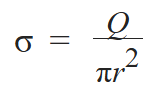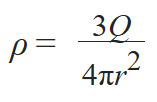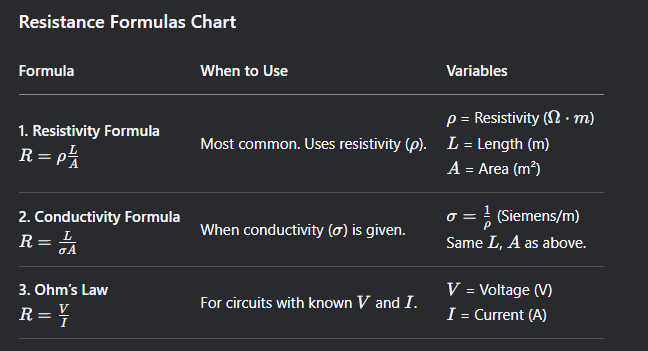Physics 1004 Midterm one
1/70
There's no tags or description
Looks like no tags are added yet.
Name | Mastery | Learn | Test | Matching | Spaced |
|---|
No study sessions yet.
71 Terms
What is the formula for electric force on a charge?
F=qE
If the test charge is negative, in which direction is the force relative to the field?
Opposite direction of the electric field.
What is the principle of superposition for electric fields?
The net electric field is the vector sum of individual fields from each charge.
What happens to the electric field between two parallel plates?
It is uniform in the central region:

What is an electric dipole?
A pair of equal and opposite charges separated by a distance.
What is the field at the midpoint between two equal and opposite charges. (dipole)
Non-zero and points from positive to negative charge.
What is electric potential (V)?
The electric potential energy per unit charge at a point in an electric field.
What is the SI unit of electric potential?
Volt (V) = Joules per Coulomb (J/C)
What is the electric potential at infinity for a point charge?
Zero (by convention)
What is the formula for electric potential due to a point charge?

What is the relationship between electric field and potential?

What is the potential energy (U) of a charge in an electric field?

Does a negative charge move from high to low potential naturally?
No — it moves from low to high potential, decreasing its potential energy.
If a charge moves from low to high potential, what happens to its potential energy?
It increases.
Where is the electric potential the same?
Along an equipotential surface.
What is the potential inside a conductor?
Constant throughout the conductor.
Can work be done by the field if a charge moves along an equipotential line?

What is an Amp equal to?
1 amp = 1 coulomb of charge per second
E vs V vs U
E = how strongly charges are pushed (field strength).
V = how much energy a unit charge could have (per-charge energy).
U = how much energy a specific charge does have (total energy).

V due to sheet of charge?

V due to distrubuted charge

What is the capacitance of a parallel-plate capacitor?

How do you calculate energy stored in a capacitor?

What happens to the energy if voltage doubles?
(Capacitor)
Energy increases by a factor of 4 (since it's proportional to V²
How do capacitors add in parallel?

How do capacitors add in series?

In parallel, what is the same for all capacitors?
Voltage across each capacitor.
In series, what is the same for all capacitors?
Charge on each capacitor.
How to find charge (Q) on capacitors in series?

What is a dielectric?
An insulating material placed between the plates of a capacitor.
What does a dielectric do?
Increases capacitance and voltage the capacitor can withstand by reducing the electric field.
What is the formula for capacitance with a dielectric?

How to find charge (Q) on capacitors in paraelle?

What happens to capacitance if plate area increases?
capacitance increases
What happens to capacitance if plate distance increases?
Capacitance decreases.
How are the electric field lines originated around an equipotential surface?
Electric field lines are perpendicular to surface
How to find charge density of arc?
L = R theta
R = radius
(theta is total angle of arc in radians)

capacitors in series have the same ___ but different ___
Q, V
capacitors in parallel have the same ___ but different ___
V, Q
Two formulas for energy (U) of capacitor
U = ½ CV²
U= Q²/C
How to convert to radian from degrees?
x (pi/180)
Formula for charge density of arc?
(r theta = radius x angle in rad)

Formula for charge density of disk?

Formula for charge density of the surface of a sphere?

Formula for charge density of the volume of a sphere?

What are the SI units for λ, σ, and ρ?
λ: Coulombs per meter (C/m)
σ: Coulombs per square meter (C/m²)
ρ: Coulombs per cubic meter (C/m³)
A wire (length = 10 m) has λ = 0.5 C/m. Find Q.
Q=λ×L=0.5×10=5C.
A disk (radius = 2 m) has σ = 3 C/m². Find Q.

A cube (side = 3 m) has ρ = 2 C/m³. Find Q.

If λ = kx (where k is a constant) for a rod (0 to L), how do you find Q?
Integrate!

Formula for electric field of ring?

Definition of current?
The amount of charge per unit time that passes
What is current density?
The amount of current through unit area?
Formula for current density (j)?

As diameter of a wire increases the resistance ________
Decreases
As the length of a wire increases the resistance _______
Increases
What are the three equations for power?
P = VI
P = I²R
P = V²/R
Formula that expresses resistance using resistivity

When do material obey ohms law?
The resistivity (ρρ) is constant (independent of applied voltage or current).
The material has a linear current-voltage relationship (i.e., doubling voltage doubles current).
Temperature remains constant (resistivity can change with temperature).

When does this formula apply?
any uniform conductive material with a constant cross-section.
Formula that expresses resistance (R) in terms of conductivity (σ) instead of resistivity

Formula for electric field? (volts per meter)
E = V/L
V = volts
L = length
What is energy transfer equivalent to?
power x time in seconds
What is the integral of cos theta?
What is the integral of sin theta?
Cos theta = Sin theta
Sin theta = -Cos theta
When solving a projectile motion problem for a particle in an electric field what relationship is import and often used when solving the problem?
F = qE
F = ma
ma = qE (rearrange and solve for unknown)
What is net flux?
The sum of the flux throughout the entire surface
What are the two main formulas for electric flux?

Electric field formulas from chapter 26

What is drift velocity?
Drift velocity (vd) is the average velocity at which free electrons (or other charge carriers) move through a conductor when an electric field is applied.
What is drift velocity formula?

Three formulas for resistance?
